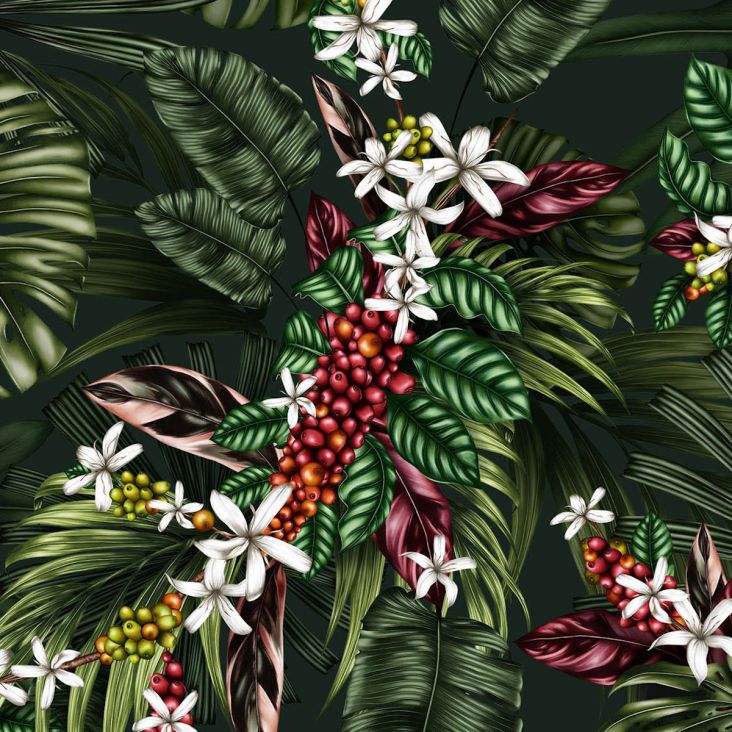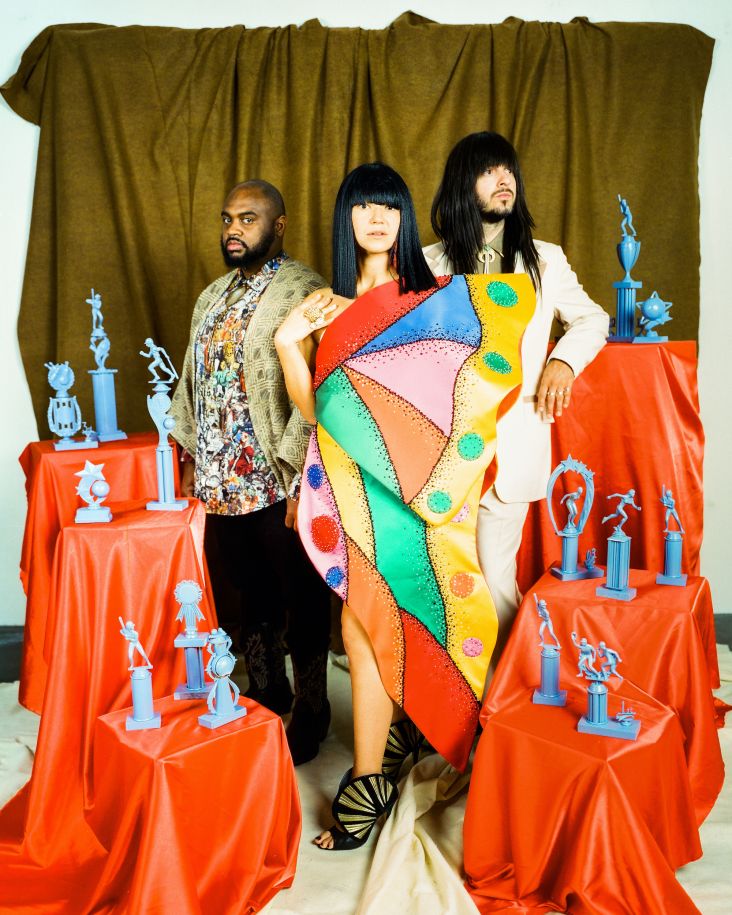New grid system works by Charles Gaines, the artist who paints faces and trees by numbers
For those of you who love orderly patterns and grids, Charles Gaines will no doubt be a big inspiration. One of the first generation conceptualist artists of the 1960s and '70s, his groundbreaking work over the last five decades has explored the relationship between language and systems as well as politics, culture and identity. And now his latest artworks are on show at his first-ever solo show in the UK.
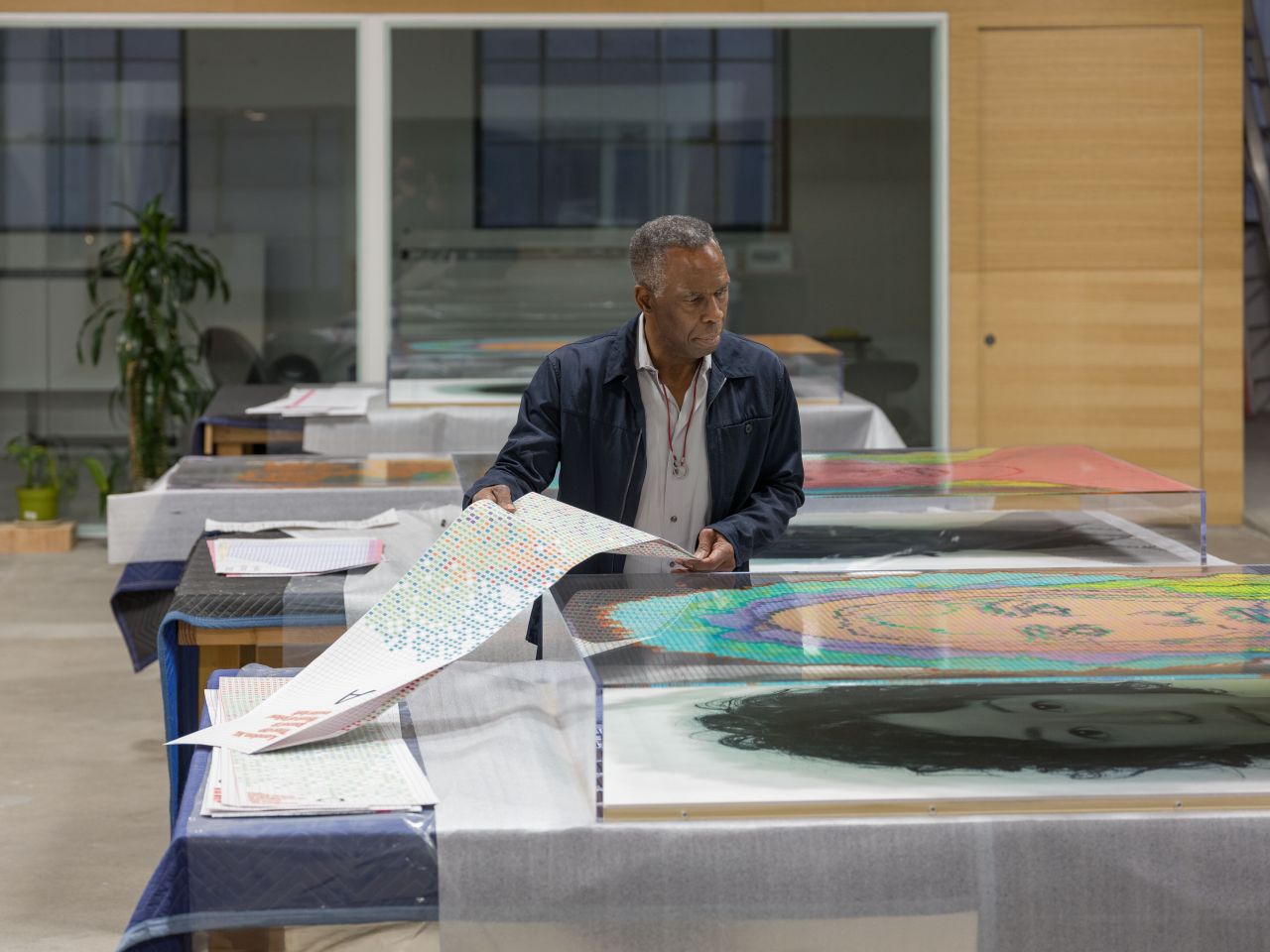
Comprising two new bodies from Gaines' critically acclaimed Plexiglas gridworks, the exhibition at Hauser & Wirth London includes his Numbers and Trees and Numbers and Faces series – where he literally paints by numbers onto a clear acrylic sheet. It's part of his ongoing exploration of formulas and systems with a closer look at ideas around identity and diversity.
With Numbers and Faces comes the piece, Multi-Racial/Ethnic Combinations Series 1, a continuation of the Faces series that Gaines began in 1978. Here, Gaines creates an amalgam of faces within one artwork and seeks to "interrogate ideas of representation, and more specifically the political and cultural ideas that shape one's understanding of the concept of multi-racial identity," as the Gallery explains it.
In preparing for this work, Gaines searched for people who self-identified as multiracial or multi-ethnic and invited them to be part of the work. "I believe that the system of mapping these faces over a series can, itself, become meaningful by being drawn into an analogy with certain concepts of human reproduction such as heredity, genealogy, descent, lineage, genetics," he says. "Concepts that exist within the same domain. One of the main issues that interest me in working with systems is that, at a certain point, its relationship to any idea is arbitrary."
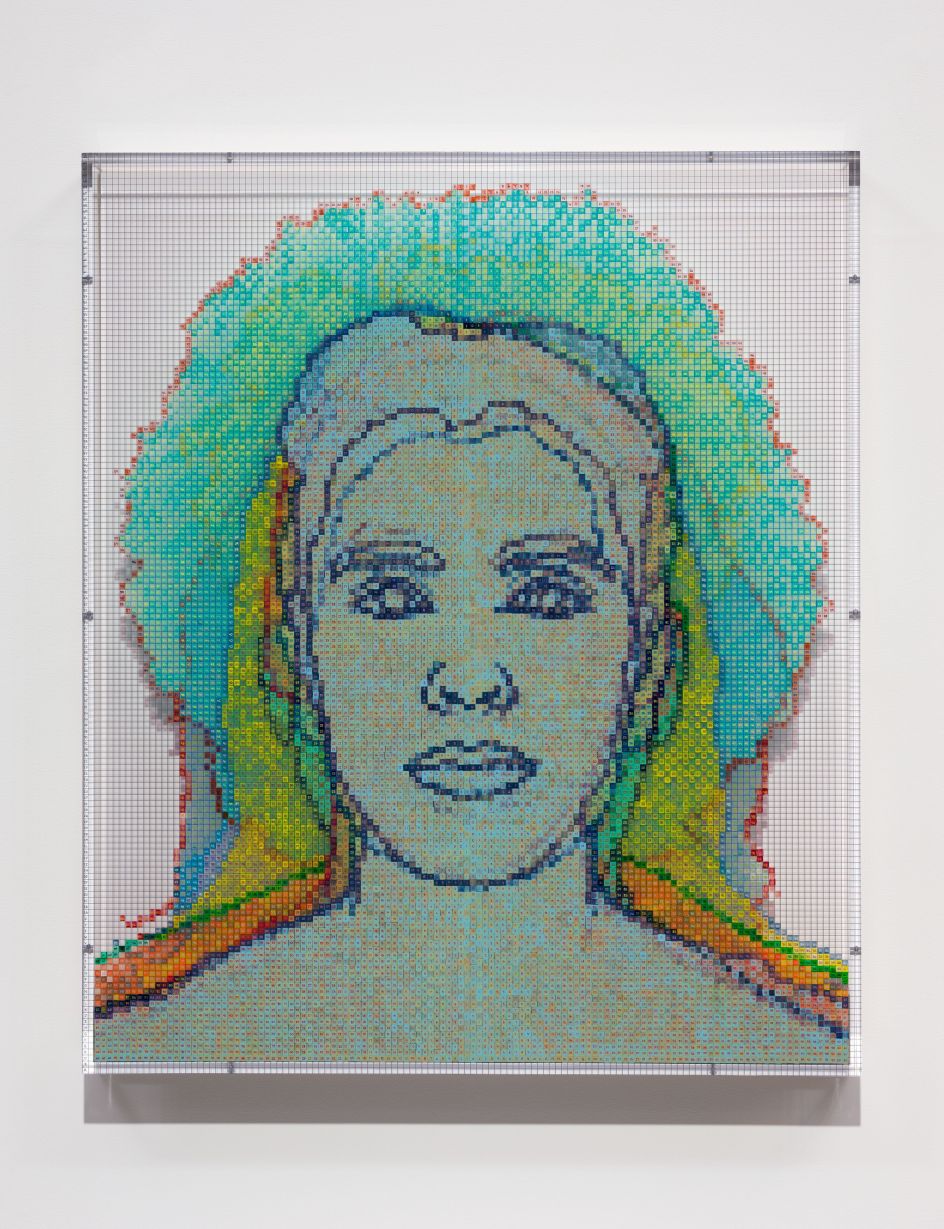
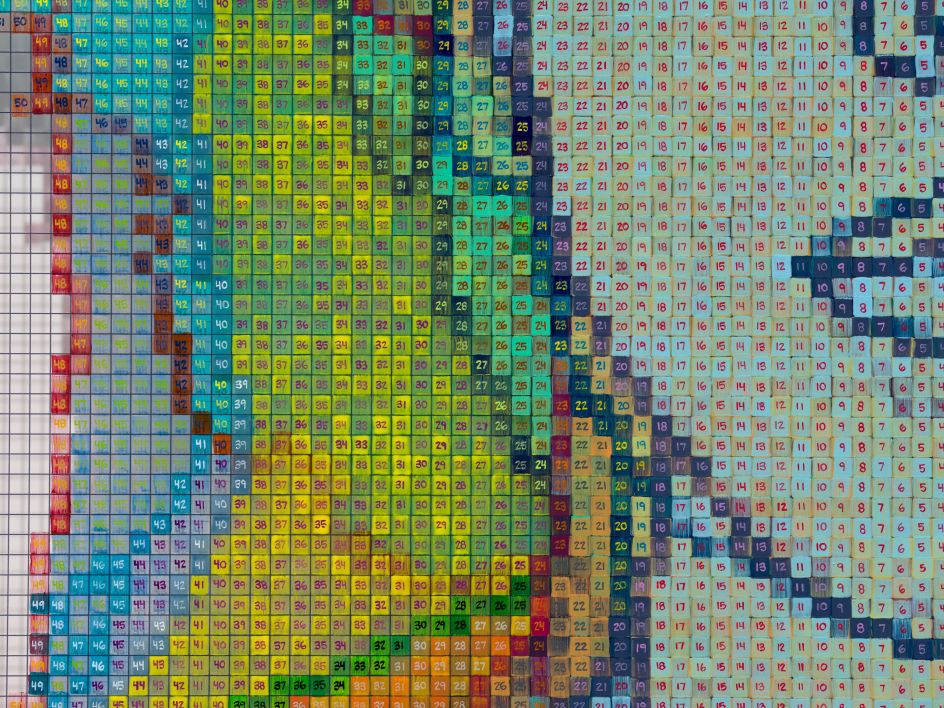
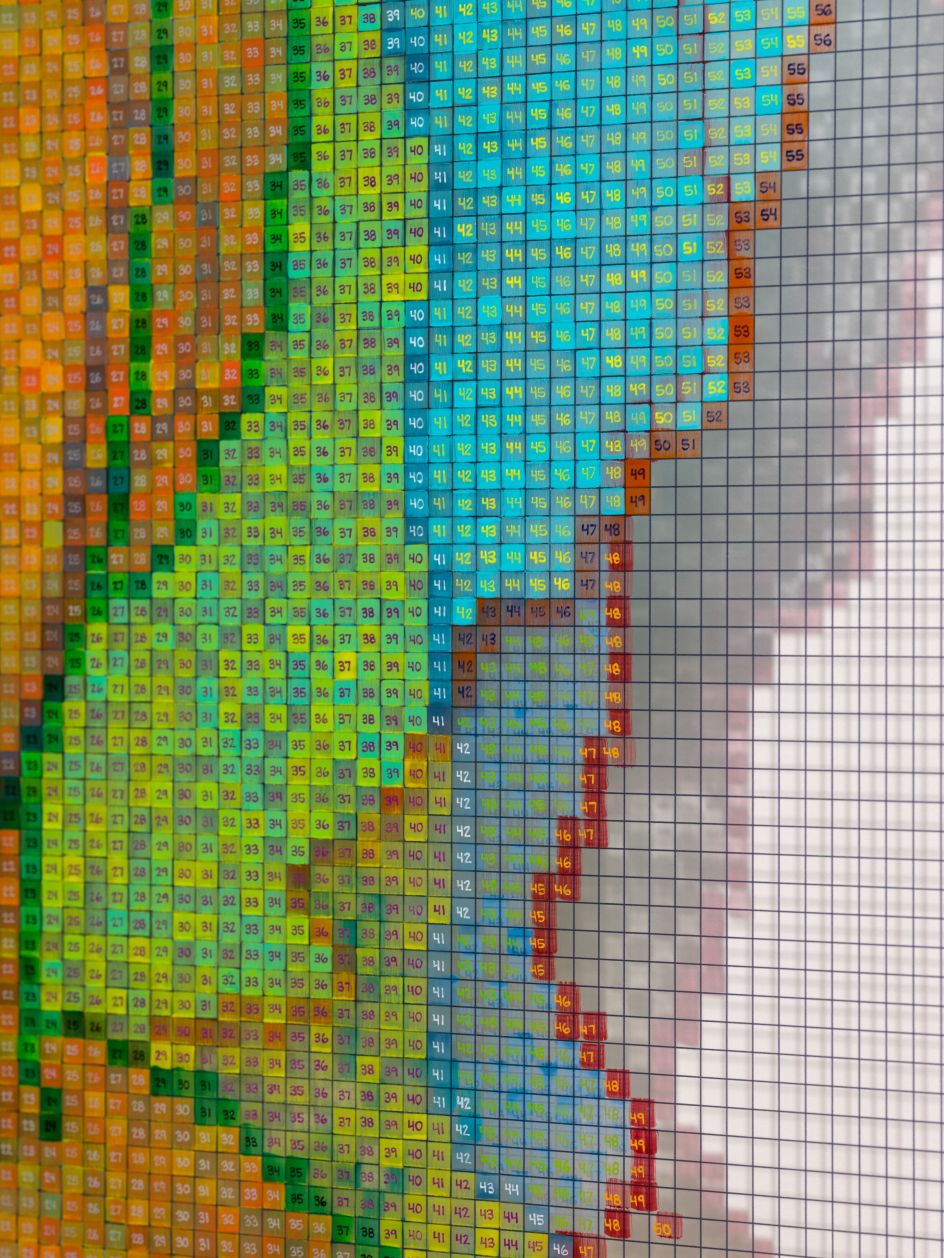
Each face is assigned two colours: one for the contour lines of the face and the other for the space in between the contour lines. The faces are sequentially mapped out and overlaid one-by-one throughout. "When the image is overlaid, the colours of the faces merge in areas and remain unaltered in other areas; over the course of the series the merging of contours produces different patterns and colour effects that dynamically and formally play out a binary relationship; the generalised structure of a face and the differences between faces."
Formal black and white photographs of each successive sitter appear on the back panel of each work. "The concept of identity politics has played a central role within Gaines' oeuvre, and the radical approach he employs addresses issues of race in ways that transcend the limits of representation," adds the Gallery.
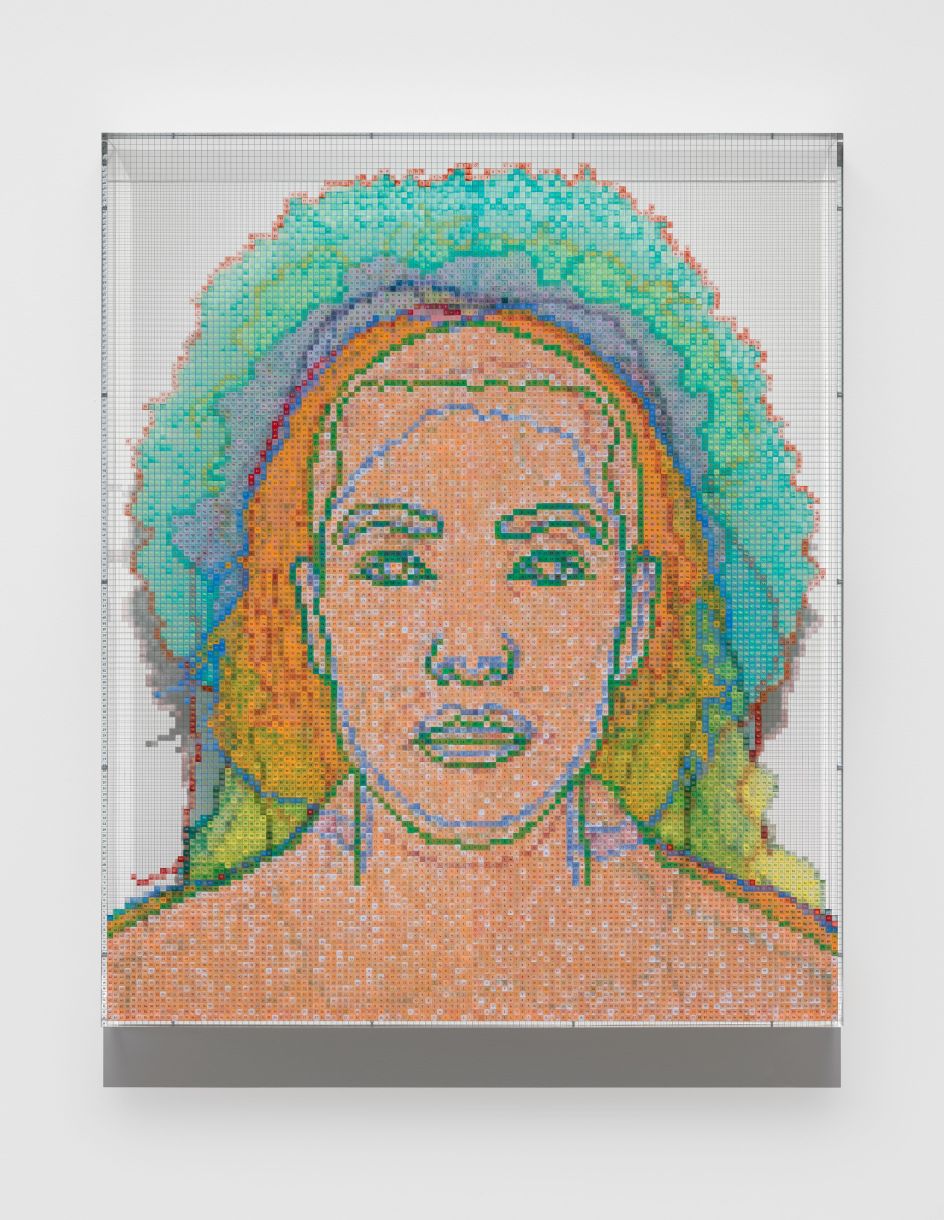
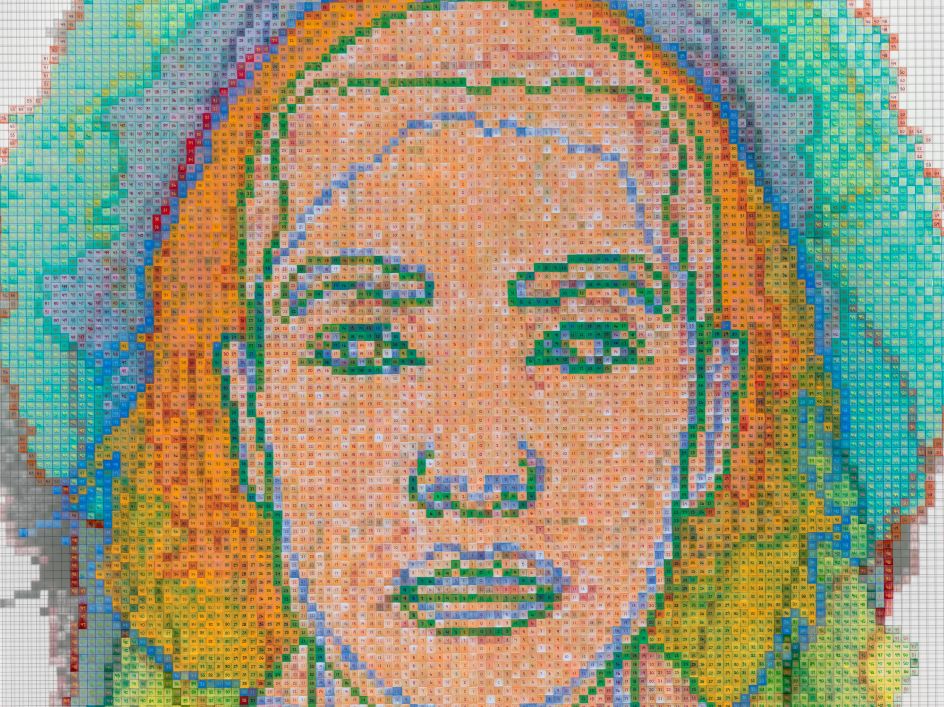
As with all Gaines' artworks, he applies a shared system of rules. But for Numbers and Trees, his latest piece, London Series 1, takes him down a slightly different route as these latest works are larger in scale and inspired by the vast English trees Gaines examined and photographed during a trip to Melbury in Dorst early last year.
Gaines plots each London tree by assigning it a distinctive colour and a numbered grid that reflects the full form of the tree depicted in the detail photo on the back panel of the work. Each successive work is realised by overlaying the forms of trees one at a time and in progression, following Gaines' systematic sequencing process. "As I watch the systems and works evolve, and images being produced, I'm totally reminded that what I'm seeing is not a product of my intention but is a product of a system, and the system has a completely arbitrary relationship with the object that’s being represented," Gaines adds.
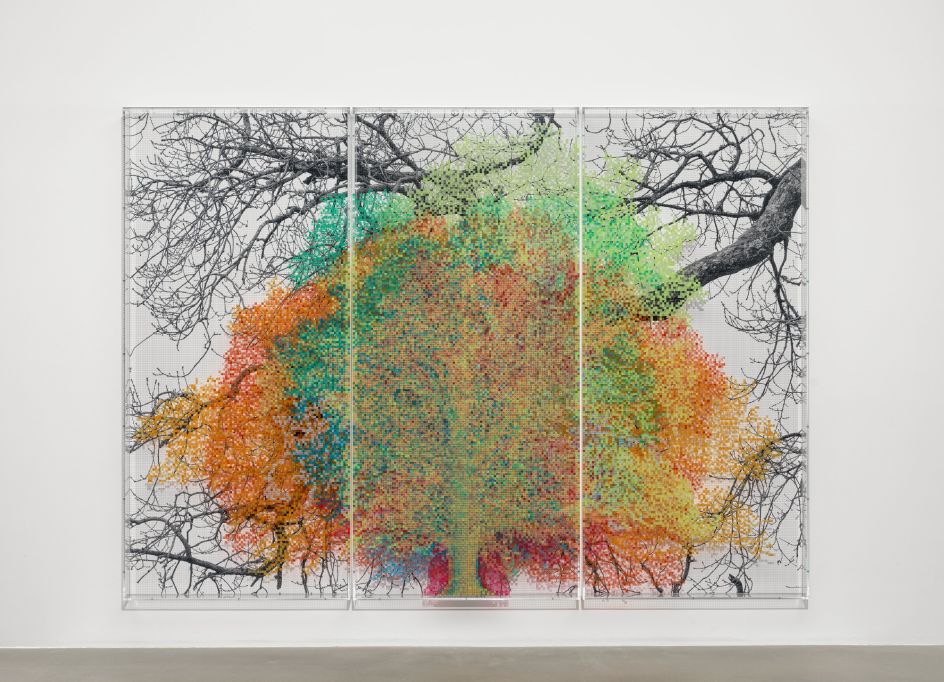
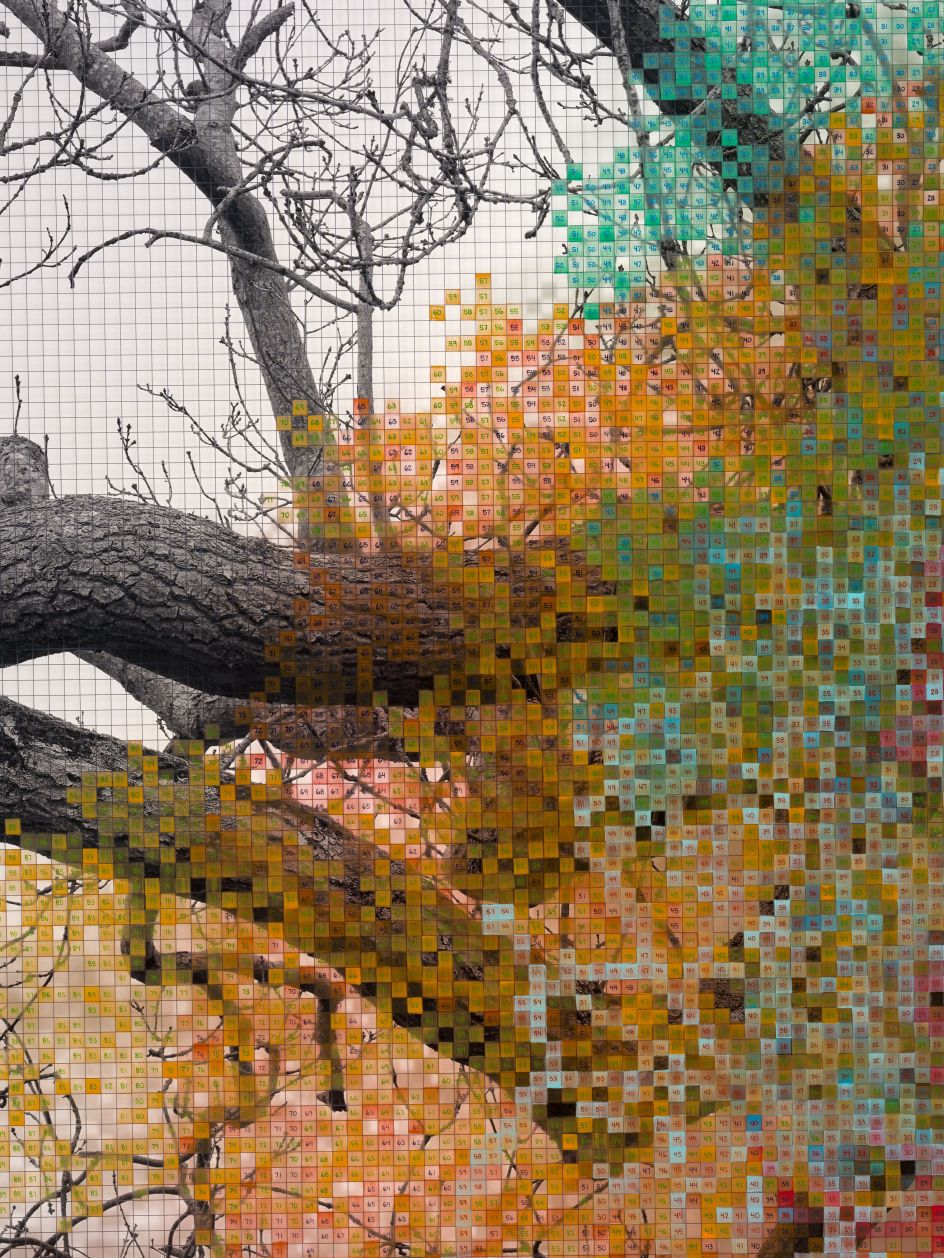
Born in Charleston, South Carolina in 1944, Charles Gaines lives and works in Los Angeles and has been a member of the CalArts School of Art faculty since 1989, where he recently established a fellowship to provide critical scholarship support for black students in the M.F.A Art programme. His latest exhibition, Multiples of Nature, Trees and Faces, runs at Hauser & Wirth London until 1 May 2021. Check out the virtual show.




 by Tüpokompanii](https://www.creativeboom.com/upload/articles/58/58684538770fb5b428dc1882f7a732f153500153_732.jpg)


 using <a href="https://www.ohnotype.co/fonts/obviously" target="_blank">Obviously</a> by Oh No Type Co., Art Director, Brand & Creative—Spotify](https://www.creativeboom.com/upload/articles/6e/6ed31eddc26fa563f213fc76d6993dab9231ffe4_732.jpg)










